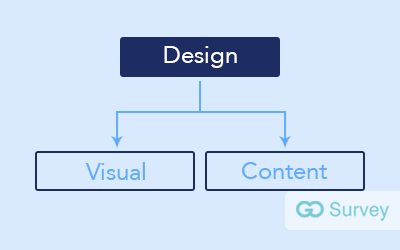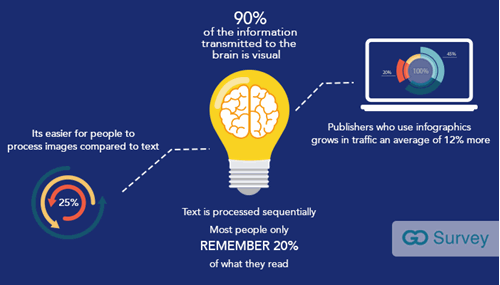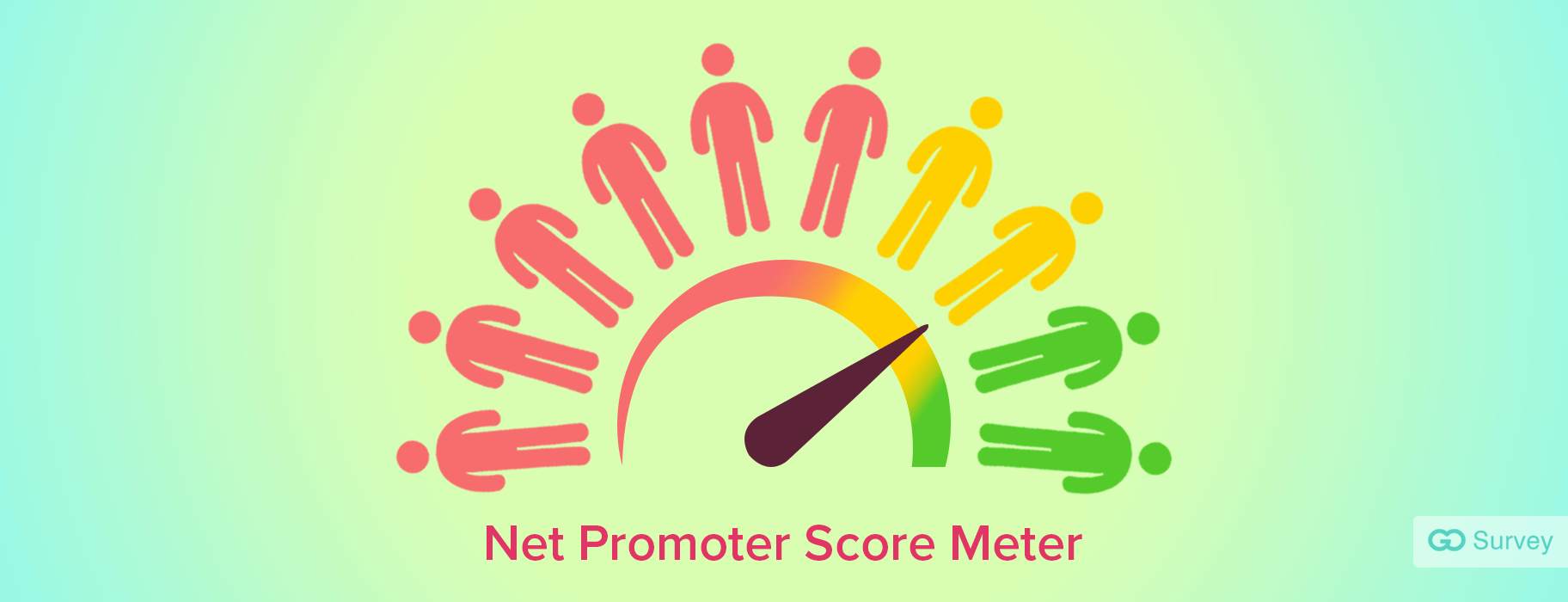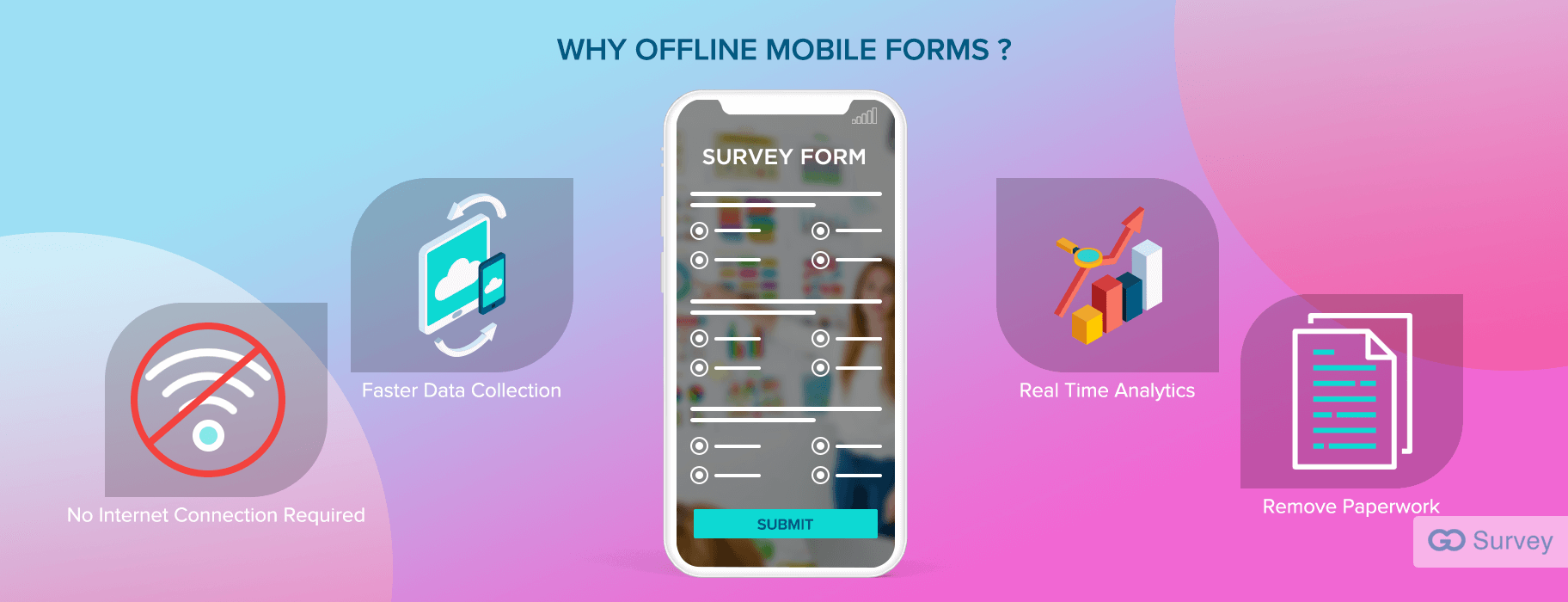Customer Surveys are an essential part of any business. Be it a service industry or a product company, everyone needs data to understand marketing strategies and take crucial steps for their growth. All their current decisions are based on the data accumulated in the past. Today’s era is very data-driven and there is a constant need to keep updating this data from time to time as per the changing market trends. And what better way to gain all this information than surveys!
Survey are the most efficient tool to gather data, be it quantitative or qualitative. However, there are many aspects that need to be taken into consideration to conduct a successful survey. And the most important amongst them is ‘Design’ – visual and content wise.

Let’s see how a well-designed survey can get better results. Here’s exploring the visual design part!
Impact of Good Visual Design
Visual design helps in establishing customer engagement. Customers easily relate to things that look pleasing compared to plain ones. A human brain processes visuals 60,000 times faster than plain words. Therefore, a visually appealing product is bound to gain more customer attention than any other. This can be further segmented into images, fonts, background colours, etc. Let’s look at some facts to see how visual design impacts the human brain.

Moreover, there a detail study on the psychology of typography. It shows how every font has a set of underlying associations. Choosing the right font, clubbed with the right colour palette is crucial as it will symbolise the surveying company.
Do we need to say more to make it clear how visual data is processed faster than any other kind?
Need for Good Content Design
The second kind of design aspect that we shall consider is the ‘content design’. Especially when it comes to creating surveys! Here are some things that need to be considered for good content:
1. Purpose of the Survey
Before designing a survey, it is critical to understand the purpose behind it. What kind of data do we need, who is the target audience, what needs to be derived from the data, etc are some of the questions that need to be clear before designing the questionnaire. Lack of clarity in these questions will end up collecting data that is not required.
2. Clarity in Questions
It is essential to use the right words while framing a question. Not all surveys have face to face interaction. It does not necessarily give a chance to explain the questions to your customers. Use of too technical terms might not give appropriate results. At the same time, complicated sentence construction may also be difficult to understand. This brings us back to point number 1. What is the whole purpose of the survey? Clarity in purpose will help us bring clarity in constructing the questions for the questionnaire.
3. Language used for Framing
Using too technical words in framing questions will make it difficult to comprehend for the customer. They might input wrong answers or choose to skip the question entirely. Hence, it is crucial to use simple language while framing questions that makes it easy for customers to understand and provide correct answers.
4. Order of Questions
The sequencing of questions should have a logical flow. Jumping from one topic to another and then coming back to the same topic might confuse the respondents. They might get irritated and lose interest in completing the survey, or might end up giving skipping questions.
5. Type of Questions
While quantitative surveys are simple, qualitative surveys need detailed input from respondents. Generally, a human brain remembers basic activities of their day, like number of commute hours to office in a day to the meals consumed that day. If your questions are something like ‘how many hours do you commute in a year’, the customer might not want to answer that. Such questions are difficult to comprehend for the mind and increases non-response rates. This also impacts the ability to act upon the data collected.
6. Open ended vs Close ended
When it comes to close ended questions, customers have a fixed set of options to choose their answers. Whereas, open ended questions allow the customers to give their own input. If these questions are not clear, data obtained from the survey will also be very vague as customers input might drastically vary. Therefore, extra clarity is required in open ended questions.
7. Length of the Survey
Many a times, customers do not participate in taking surveys merely by looking at the length of it. Long questionnaires will be extremely time consuming. Customers might lose interest half way or tend to give generic inputs instead of genuine ones. Based on the goals of the survey, questionnaires designed should be short and to the point.
8. Check Box vs Radio Buttons
One of the biggest mistake in designing surveys is placing the wrong type of data selection method. It is important to know where to place a check box option and where to place radio buttons. When your question requires only one answer, use the radio buttons. However, when your questions might have multiple options, use the check box option.
But, if the question is not clear, customers might check every box in the selection. Now, you may ask what happens if all boxes are selected. This will provide inaccurate results as it shows that the customer taking the survey is confused, or not ideal for the survey. Selecting all option nullifies the purpose of taking a survey in the first place.
Therefore, the right content design plus visual design of a survey will encourage customers to take the survey increasing participation and giving appropriate data. And GoSurvey is the right partner to help you make a well-designed survey.
GoSurvey analyses the need of the company and helps them in designing surveys that increases customer engagement. It has catered to various companies across multiple industries, assisting them in bridging the gap between their target market. It not only designs surveys, but also provides many more rich features that give out efficient reports that you need.








